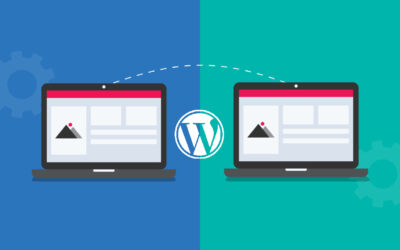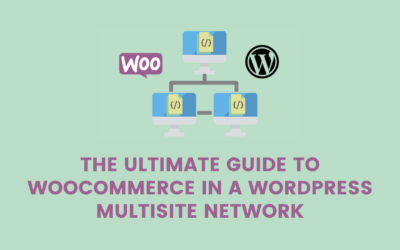Topic:- 10 Easy Tips to Speed up Your WordPress Website
Keywords:- WordPress speed optimization, WordPress speed optimization service, speed up WordPress site, page speed optimization service.
A slow website is painful to use, less engaging to visitors and hurts your search engine rankings.
A one-second delay in page load speed results in:
- 11% fewer page views
- 16% decrease in customer satisfaction
- 7% loss in conversions
You Should Do These 2 Quick Things:
- Test Your Site Speed & Performance
- Backup Your Website
Here are the 10 tips for speeding up WordPress site:
1. Choose a Reliable Web Hosting Provider:
The first thing you need to do is pick a reliable web hosting provider. The major factor that influences the speed of a website is the hosting of your WordPress website speed optimization. Web hosting providers like HikeBranding, a website development company in India, make setting up optimized cloud servers as easy as click and launch by speeding up WordPress sites.
2. Remove Unnecessary Themes and Plugins:
While backing up, you will notice some plugins on the site that you are not really using.
The problem with that: Many plugins add stuff to the site header that gets loaded every time someone requests to see it. HTTP requests are one of the things that can really slow a site down, so the next step is to log in and sort through the plugin list through the WordPress speed optimization service.
Delete everything you are not actually using and disabled plugins that you use only occasionally. I also made a quick stop in my theme menu to see if there is anything that you don’t need anymore for speeding up the WordPress site.
3. Plugin Performance Profiler:
When not sure which plugins you can do without, the Plugin Performance Profiler helps you. It scans plugins in terms of performance and is useful to pinpoint the ones that slow down your site.
You can install it on your site and then start a scan under Tools > P3 Plugin Profiler. This will let you know the breakdown of how long each plugin needs to load.
Once you know exactly which plugins make your site sluggish, you can either eliminate them or look for alternatives with a page speed optimization service.
4. Everything- Update it!:
Keeping WordPress, themes, and plugins up to date not only gives you access to the latest features but also lets you take advantage of any speed improvements.
According to WordPress website Development Company, updating is also one of the main reasons for the backup at the beginning. Sometimes things go wrong during the process, in which case it’s always better to have a copy of your site around.
Once the updates were finished, I quickly checked the site frontend to ensure everything looked as it did before for WordPress speed optimization.
5. Optimize Your Database:
Over time, the database can accumulate a lot of dead weight. When that happens, it can seriously slow down data retrieval for any website request.
Optimizing the database will help you remove data overhead from database tables and unnecessary entries like old post revisions and more.
You can also limit the number of post revisions. WordPress creates to keep your database from growing too large in the future with page speed optimization service.
Related: Best WordPress Membership Plugins to Add on Your Website
6. Optimize Images:
Images often make up the bulk of any webpage, especially if it’s completely composed of visuals. Therefore, images need to be optimized as much as possible. That’s also one of the recommendations given by the WordPress website development company. For speeding up a WordPress site.
In general, there are a few ways to optimize images. The first is only to use images just as large as they need to appear on your site. A second way to reduce images in size is to use compression. That means discarding data that is not needed.
7. Enable Gzip/Brotli Compression:
Just like on your computer, which is zipping up the files to make them smaller so that browsers need less time to download them.
Gzip is another form of compression which compresses web pages, CSS, and JavaScript at the server level before sending them over to the browser.
Brotli is a new compression algorithm developed by Google which has been known to show significantly better results than its predecessor, Gzip.
8. Turn on Browser Caching:
One of the most frequently recommended ways by most of the website development companies of India to speed up your site was to switch on browser caching.
Browser caching basically means telling your visitors’ browsers to store parts of the site on their hard drive for future use. By this, resources that aren’t likely to change can just be reused next time they swing by and don’t have to be downloaded again.
In WordPress, W3 Total Cache and WP Super Cache are caching plugins.WP Super Cache is said to be more user-friendly in case you are a beginner.
9. Minify and Concatenate:
One of the best ways selected by WordPress Website development company is to reduce the number of HTTP requests made by the browser is to minify and concatenate your CSS and JavaScript files.
It means removing all formatting inside the files that make them humanly readable (space, indentations, comments and everything else machines don’t need) and combining them into one. As a consequence, the browser has to download fewer and smaller files for the site to load.
10. Take Care of the Small Stuff:
For the most part, that was it. We have dealt with bigger issues. Now, all that’s left is to look at the waterfall diagram to see what smaller things stand out.
Check whether any file is not missing. If it is missed, correct this by putting the file back in place, thus eliminating unnecessary waiting time.
Also, notice that you aren’t loading several font styles on your site though you really only use one of them. This could be corrected quickly inside functions.php.
Reduced bandwidth usage of your hosting and faster site-loading speed on the client-side will only benefit you both in the short as well as the long run. The biggest advantage of lowering your website’s loading time is that it will help tremendously improve your visitors’ experience.





